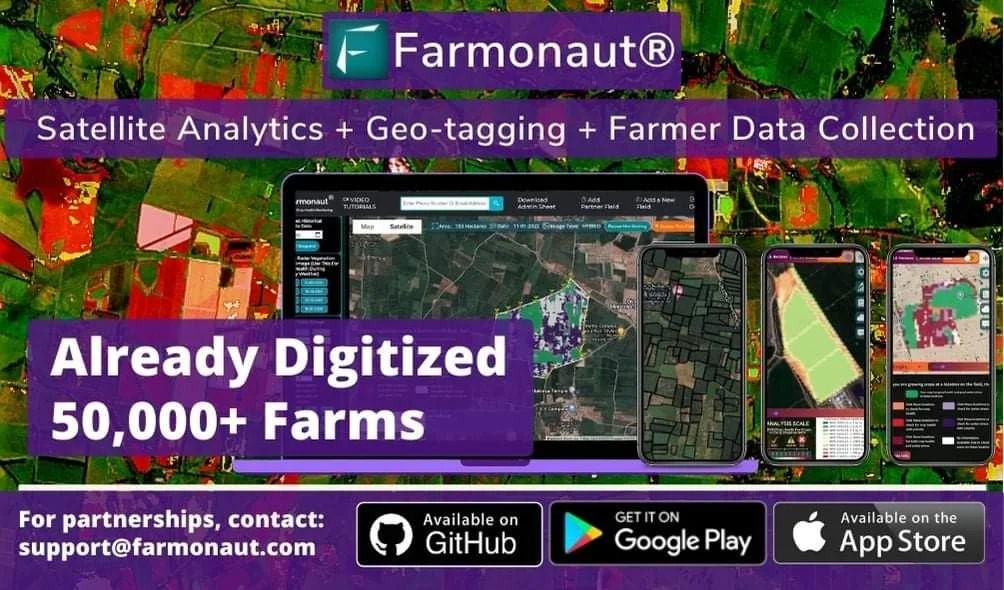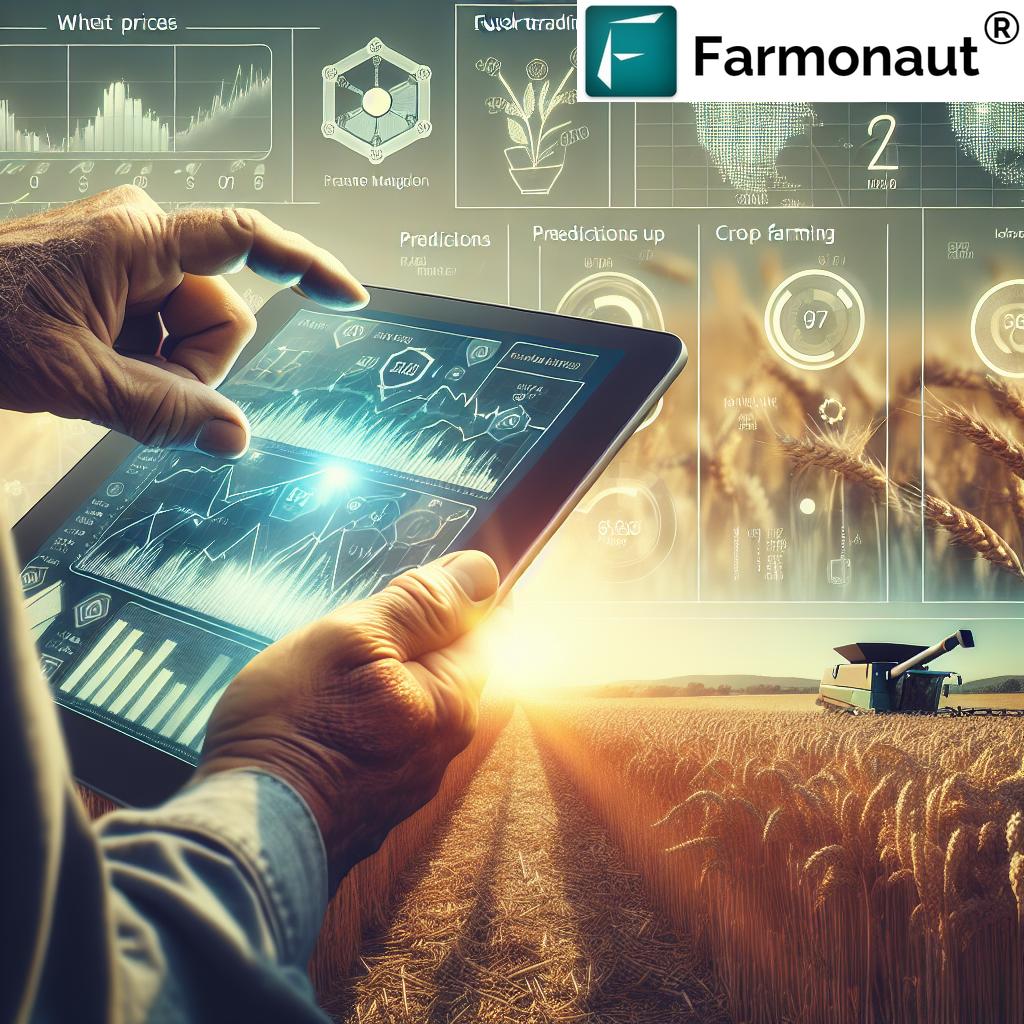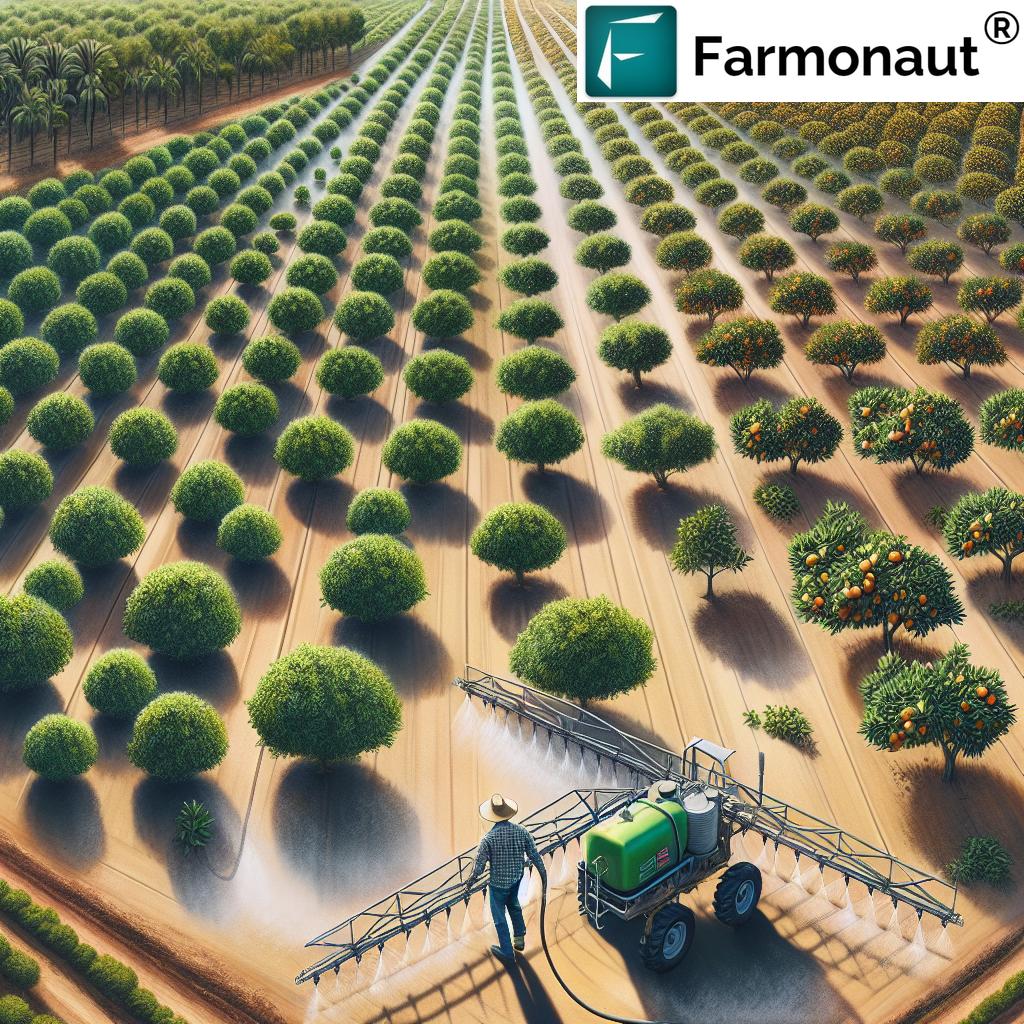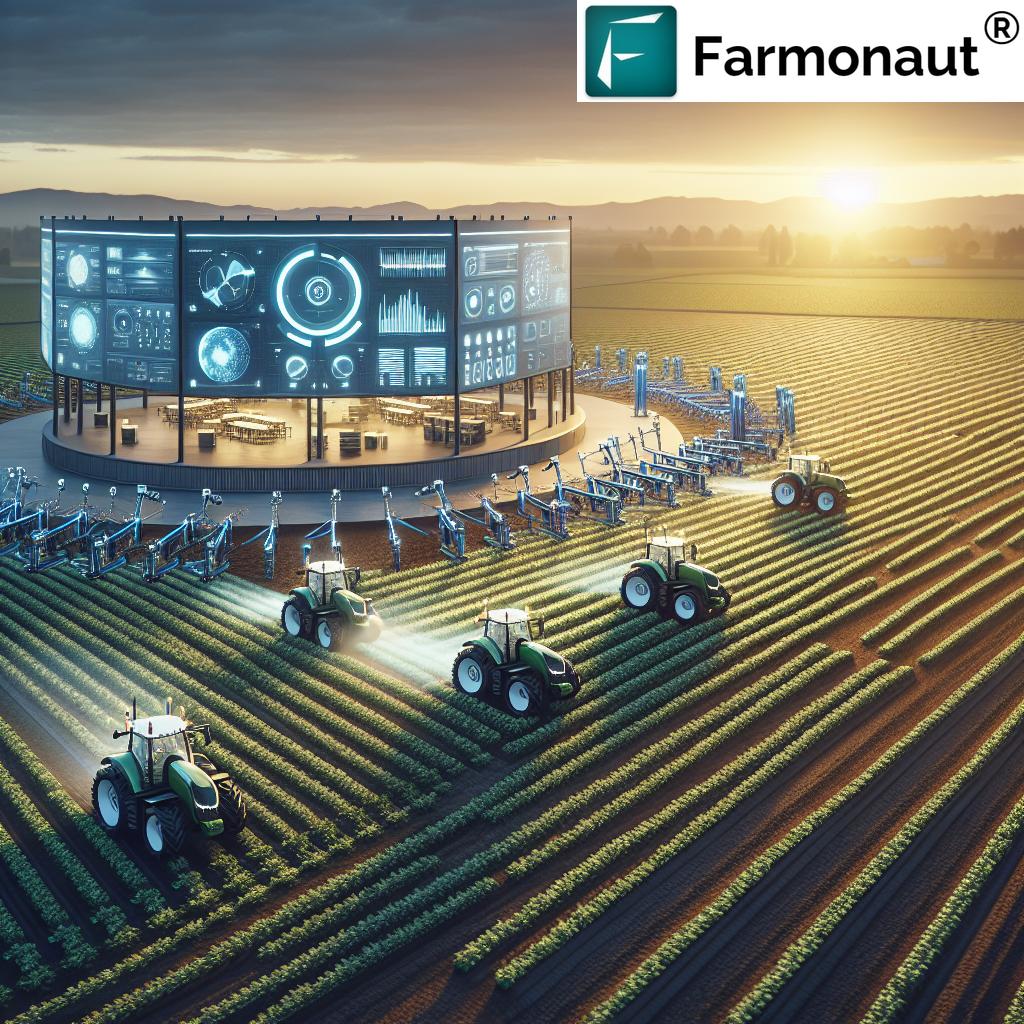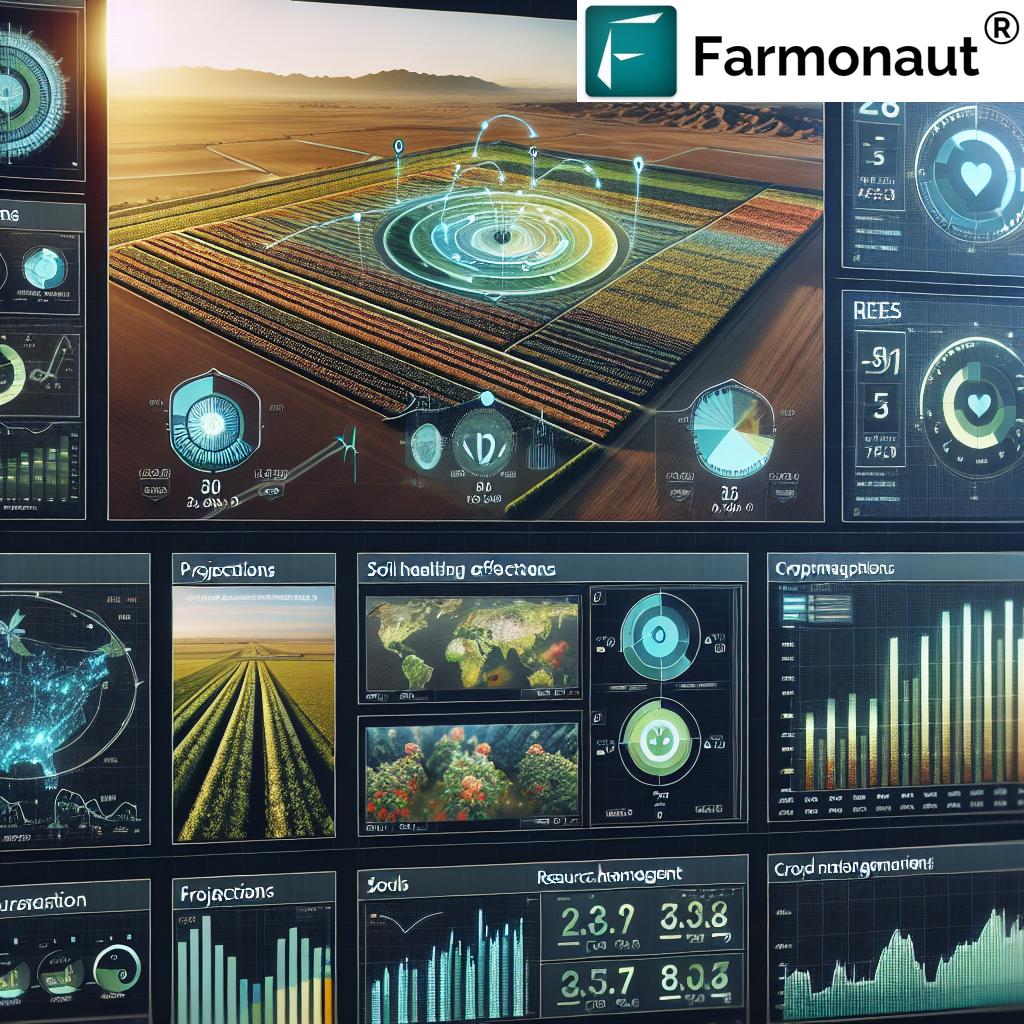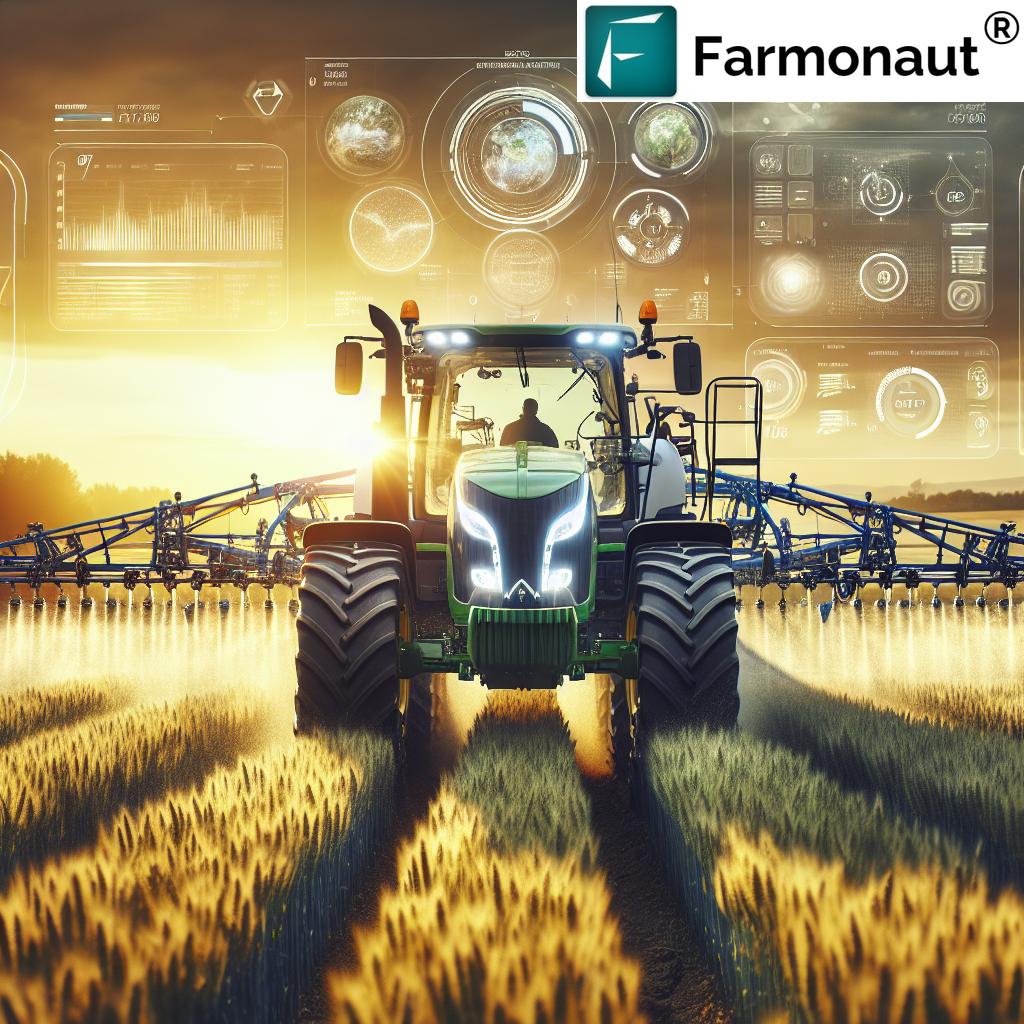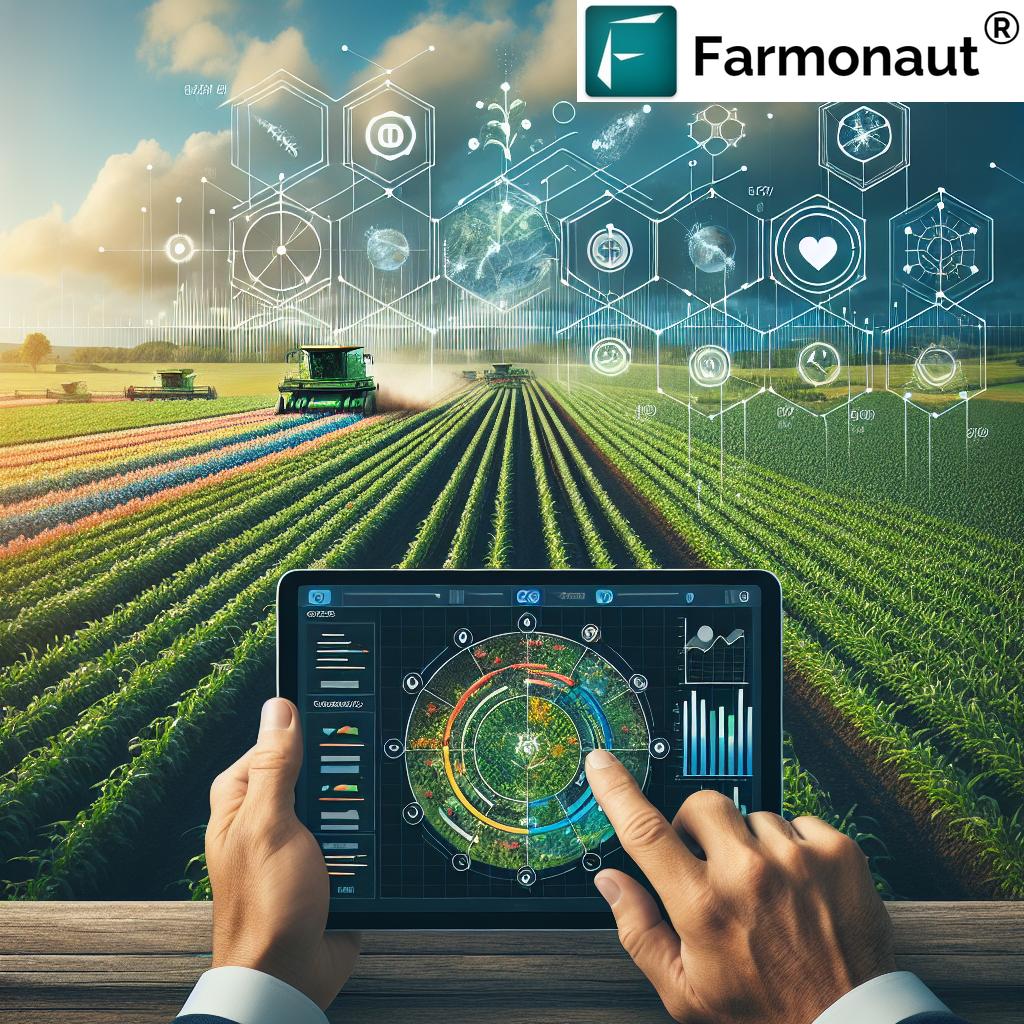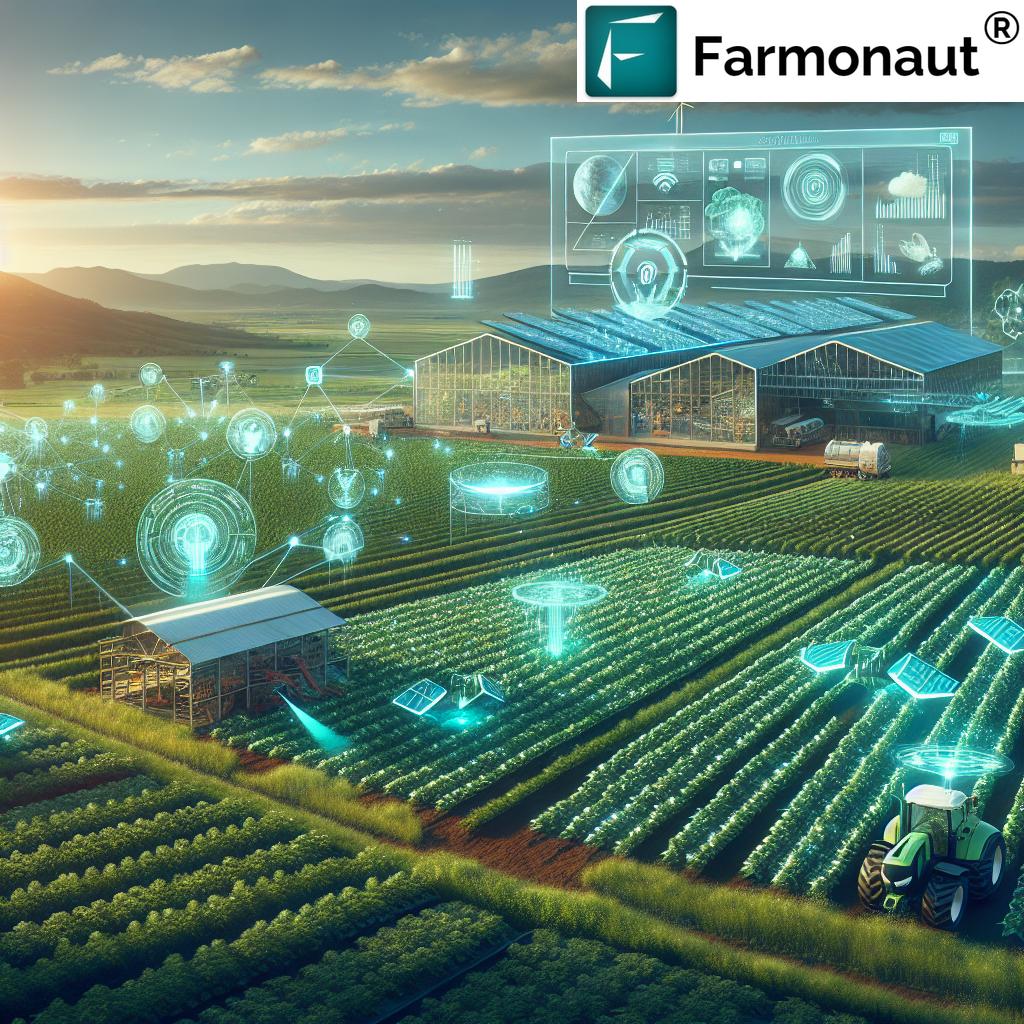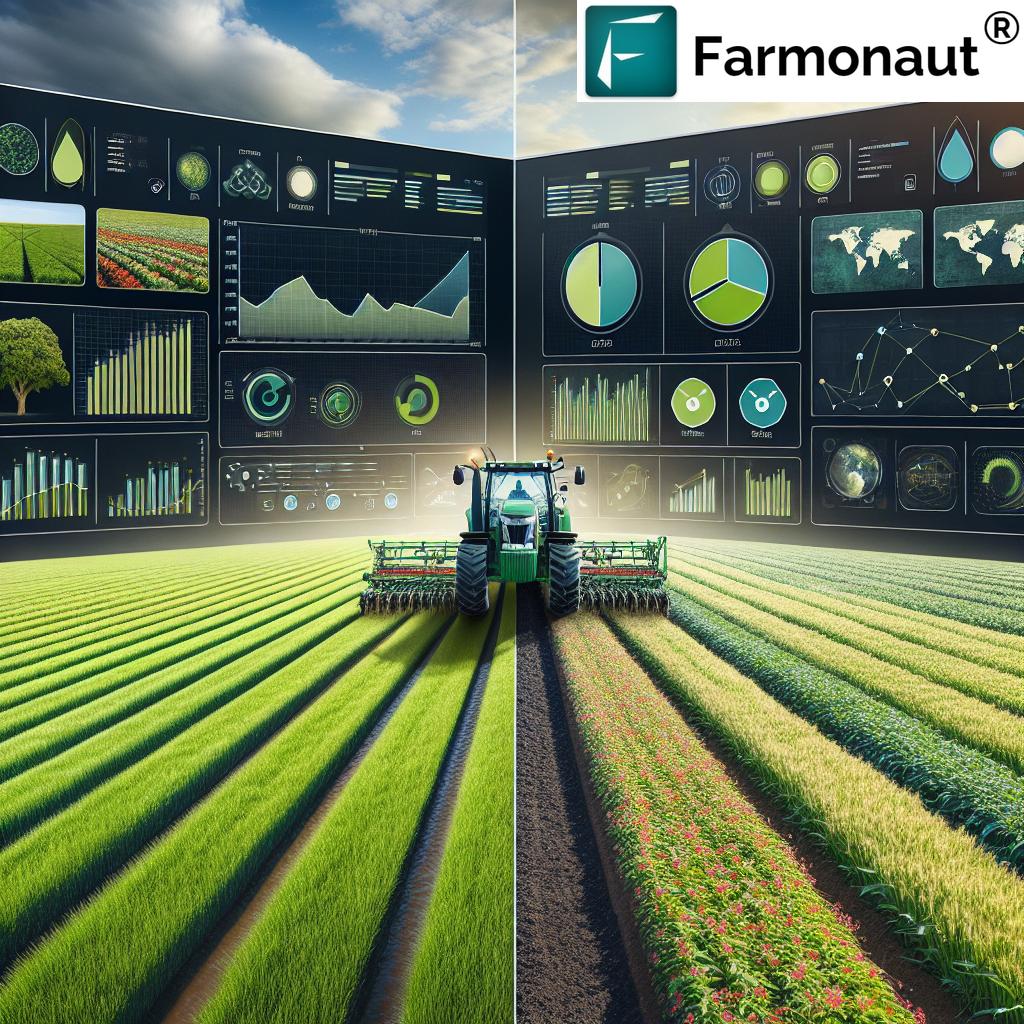Revolutionizing Australian Wineries: How GIS and AgTech Drive Sustainable Viticulture and Global Export Success
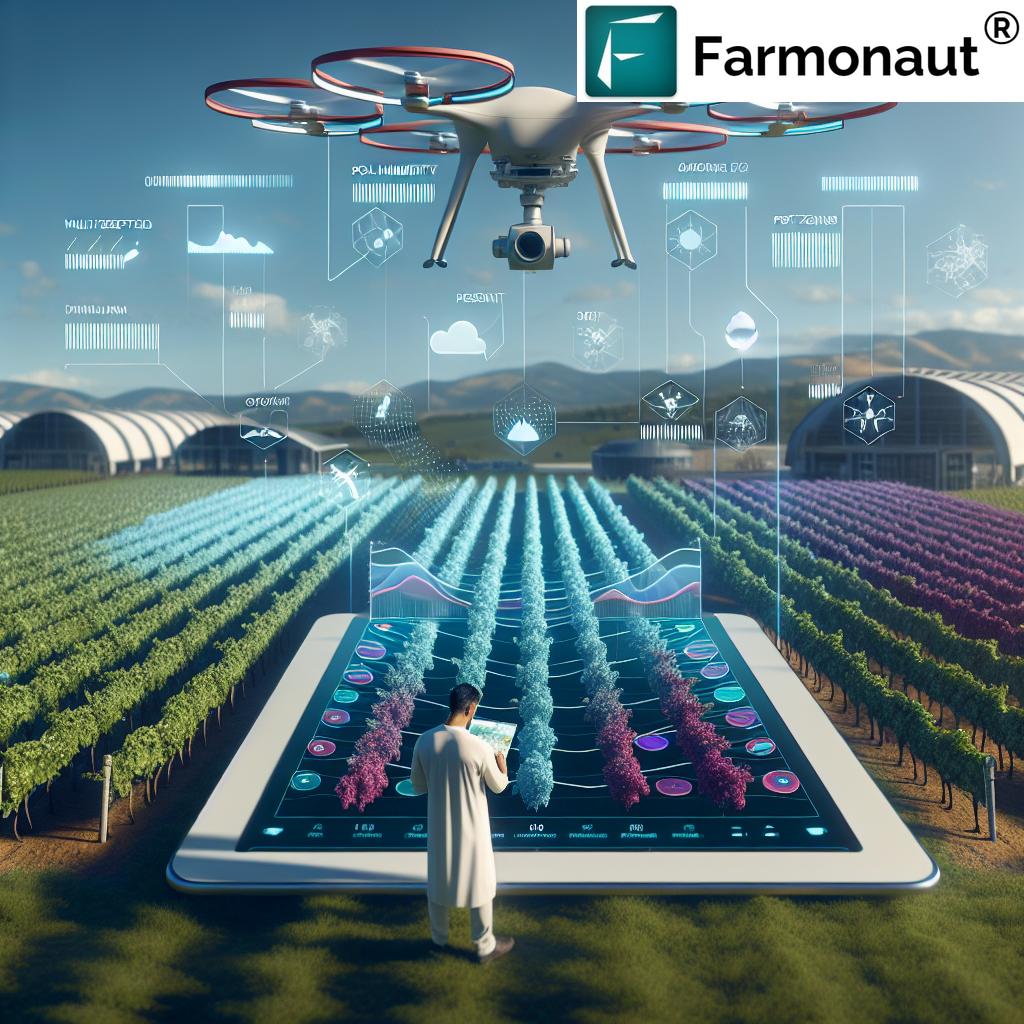
“Australian wineries using GIS technology have seen a 30% increase in sustainable viticulture practices over the past 5 years.”
Welcome to the exciting world of Australian viticulture, where tradition meets innovation, and sustainable winemaking practices are reshaping the industry. In this comprehensive guide, we’ll explore how Geographic Information Systems (GIS) and cutting-edge agricultural technology (AgTech) are revolutionizing vineyard management techniques and propelling Australia’s wine export markets to new heights.
The Intersection of AgTech and Viticulture
As we delve into the heart of Australia’s wine industry, it’s crucial to understand how modern technology is transforming every aspect of winemaking. From the vine to the bottle, innovative solutions are enhancing efficiency, sustainability, and quality.
- GIS in Viticulture: Precision mapping for optimal grape growing
- Satellite Imagery: Real-time monitoring of vineyard health
- AI-Driven Insights: Predictive analytics for harvest timing and yield estimation
- Blockchain Technology: Ensuring traceability and authenticity in the supply chain
One company at the forefront of this agricultural revolution is Farmonaut. Their satellite-based farm management solutions are making precision agriculture more accessible to winegrowers across Australia.
Sustainable Winemaking Practices
Sustainability is no longer just a buzzword in the wine industry; it’s a necessity. Australian wineries are leading the charge in implementing eco-friendly practices that not only benefit the environment but also enhance the quality of their wines.
- Water Management: Precision irrigation systems guided by satellite data
- Organic Wine Production: Reducing chemical inputs and promoting biodiversity
- Carbon Footprint Reduction: Implementing renewable energy sources in wineries
- Waste Reduction: Innovative recycling and composting programs
Let’s take a closer look at how these sustainable practices are being implemented with the help of advanced technology.
Climate Change Adaptation in Australian Viticulture
As global temperatures rise and weather patterns become more unpredictable, Australian winemakers are turning to AgTech solutions to adapt their vineyards to changing climatic conditions.
- Microclimate Monitoring: Using IoT sensors to track temperature and humidity
- Variety Selection: Data-driven choices for climate-resilient grape varieties
- Canopy Management: AI-assisted pruning and training for optimal sun exposure
- Frost Protection: Early warning systems and automated vineyard heating solutions
By leveraging these technologies, Australian wineries are not only surviving but thriving in the face of climate challenges.
Water Management Strategies in Vineyards
In a country known for its arid climate, efficient water use is paramount. Australian winegrowers are adopting sophisticated water management techniques to conserve this precious resource while maintaining grape quality.
- Drip Irrigation: Precision water delivery guided by soil moisture sensors
- Rainwater Harvesting: Capturing and storing rainfall for vineyard use
- Wastewater Treatment: Recycling winery wastewater for irrigation
- Deficit Irrigation: Strategic water stress for enhanced grape flavor concentration
Farmonaut’s satellite-based crop health monitoring system plays a crucial role in optimizing water use across vineyards.
Explore Farmonaut’s API for advanced water management solutions
Digital Tools for Winemakers
The modern winemaker’s toolkit extends beyond the traditional cellar equipment. Digital solutions are now essential for every stage of wine production and marketing.
- Fermentation Monitoring: Real-time tracking of sugar levels and temperature
- Quality Control: Spectroscopy for rapid chemical analysis
- Inventory Management: Blockchain-based systems for accurate stock tracking
- E-commerce Platforms: Direct-to-consumer sales channels
These digital tools are empowering winemakers to produce consistent, high-quality wines while streamlining their operations.

Global Wine Market Trends
“Australia’s wine exports to Asia have grown by 45% since implementing advanced AgTech solutions in vineyard management.”
The global wine market is evolving rapidly, with new opportunities emerging in Asia and shifts in consumer preferences worldwide. Australian wineries are leveraging AgTech to stay competitive in this dynamic landscape.
- Asian Markets: Tailoring wines to suit Asian palates and cuisines
- Organic and Biodynamic Wines: Meeting growing demand for natural products
- Low-Alcohol Options: Catering to health-conscious consumers
- Sustainable Packaging: Eco-friendly alternatives to traditional glass bottles
By staying attuned to these trends and using data-driven insights, Australian wineries are expanding their global reach.
Wine Labelling Regulations and Quality Control
Navigating the complex world of wine labelling regulations is crucial for success in international markets. Australian wineries are using technology to ensure compliance and maintain quality standards.
- Geographical Indications: GIS-based verification of wine origin
- Allergen Information: Automated labelling systems for accurate disclosure
- QR Codes: Providing consumers with detailed product information
- Anti-Counterfeiting Measures: Blockchain-based authenticity verification
These technological solutions not only ensure regulatory compliance but also build consumer trust in Australian wines.
Learn more about Farmonaut’s API for regulatory compliance
Vineyard Pest Control and Disease Management
Protecting grapevines from pests and diseases is a constant challenge for winemakers. AgTech is revolutionizing how these threats are detected and managed.
- Drone Surveillance: Early detection of pest infestations and disease outbreaks
- AI-Powered Image Analysis: Rapid identification of plant health issues
- Precision Spraying: Targeted application of treatments to reduce chemical use
- Beneficial Insect Habitats: Using GIS to plan biodiversity corridors
These innovative approaches are helping Australian wineries reduce their reliance on pesticides while improving overall vineyard health.
Efficient Refrigeration Systems in Winemaking
Temperature control is critical throughout the winemaking process. Australian wineries are implementing smart refrigeration systems to enhance energy efficiency and wine quality.
- IoT-Enabled Cooling: Real-time temperature monitoring and adjustment
- Geothermal Systems: Utilizing underground temperature stability
- Phase Change Materials: Innovative insulation for consistent cellar temperatures
- Solar-Powered Refrigeration: Reducing reliance on grid electricity
These advancements in refrigeration technology are not only improving wine quality but also reducing the carbon footprint of Australian wineries.
Wine Tourism Experiences in the Digital Age
Wine tourism is an essential part of the Australian wine industry. AgTech is enhancing visitor experiences and creating new opportunities for engagement.
- Virtual Reality Tours: Immersive experiences of vineyards and cellars
- Augmented Reality Wine Labels: Interactive storytelling through smartphone apps
- Online Tasting Events: Connecting with global wine enthusiasts remotely
- Personalized Tour Recommendations: AI-driven itineraries based on visitor preferences
These innovative approaches are helping Australian wineries attract visitors and build brand loyalty in an increasingly digital world.
Comparative Analysis of Vineyard Management Techniques
| Management Aspect | Traditional Method | Farmonaut-Enhanced Method | Estimated Improvement |
|---|---|---|---|
| Water Management | Manual irrigation scheduling | Precision irrigation based on real-time soil moisture data | 30% water savings |
| Pest Detection | Visual inspection by workers | Satellite imagery analysis for early detection | 50% reduction in crop losses |
| Yield Prediction | Historical data and manual counting | AI-driven analysis of satellite imagery | 25% increase in accuracy |
| Climate Adaptation | Reactive measures to weather events | Proactive planning based on predictive analytics | 40% reduction in climate-related losses |
This table clearly demonstrates the significant advantages of integrating Farmonaut’s technology into Australian wineries, supporting sustainable viticulture and improved export competitiveness.
Export Documentation and Shipping Logistics
Navigating the complexities of international wine exports requires meticulous attention to detail. Australian wineries are leveraging technology to streamline this process.
- Digital Documentation: Cloud-based systems for efficient paperwork management
- Blockchain Certification: Secure and transparent export documentation
- IoT-Enabled Shipping Containers: Real-time monitoring of temperature and humidity during transit
- AI-Powered Logistics Planning: Optimizing shipping routes and schedules
These technological solutions are helping Australian wineries ensure their products reach global markets in perfect condition.
The Future of Australian Viticulture
As we look to the future, it’s clear that the integration of GIS and AgTech will continue to drive innovation in Australian viticulture. From AI-powered vineyard management to blockchain-enabled supply chains, the possibilities are endless.
- Predictive Analytics: Anticipating market trends and consumer preferences
- Robotics in Vineyards: Autonomous pruning and harvesting machines
- Genetic Research: Developing climate-resilient grape varieties
- Vertical Vineyards: Urban winemaking solutions for the future
By embracing these technologies, Australian wineries are not just adapting to change – they’re leading the way in shaping the future of global viticulture.
Frequently Asked Questions
- How is GIS technology improving vineyard management?
GIS technology allows for precise mapping of vineyard conditions, enabling targeted interventions and optimized resource allocation. - What are the benefits of organic wine production?
Organic wine production reduces environmental impact, enhances soil health, and meets growing consumer demand for natural products. - How are Australian wineries adapting to climate change?
Wineries are using data-driven approaches to select suitable grape varieties, adjust planting schedules, and implement water-saving technologies. - What role does blockchain play in wine exports?
Blockchain technology ensures traceability and authenticity of wines, building trust with international consumers and simplifying export processes. - How can small wineries benefit from AgTech solutions?
Affordable solutions like Farmonaut’s satellite-based services make precision viticulture accessible to wineries of all sizes, improving efficiency and quality.
Conclusion
The Australian wine industry stands at the forefront of a technological revolution in viticulture. By embracing GIS, AgTech, and sustainable practices, Australian wineries are not only producing world-class wines but also setting new standards for environmental stewardship and innovation in the global wine market.
As we’ve explored throughout this guide, the integration of cutting-edge technologies like those offered by Farmonaut is transforming every aspect of winemaking – from vineyard management to export logistics. These advancements are enabling Australian winemakers to adapt to climate challenges, meet evolving consumer preferences, and compete effectively in international markets.
The future of Australian viticulture is bright, powered by data-driven insights and a commitment to sustainability. As the industry continues to innovate, we can expect to see even more exciting developments that will shape the way we grow, produce, and enjoy wine for generations to come.





